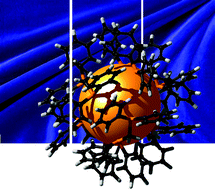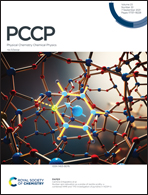Evaluation of ultrasmall coinage metal M13(dppe)6 M = Cu, Ag, and Au clusters. Bonding, structural and optical properties from relativistic DFT calculations†
Abstract
Ultrasmall ligand-protected clusters are prototypical species for evaluating the variation at the bottom of the nanoscale range. Here we explored the ultrasmall gold–phosphine M13(dppe)6 cluster, as a prototypical framework to gain insights into the fundamental similarities and differences between Au, Ag, and Cu, in the 1–3 nm size range, via relativistic DFT calculations. Different charge states involving 8- and 10-cluster electron (ce) species with a 1S21P6 and 1S21P61D2 configuration, leading to structural modification in the Au species between Au13(dppm)65+ and Au13(dppm)63+, respectively. Furthermore, this structural distortion of the M13 core is found to occur to a lower degree for the calculated Ag and Cu counterparts. Interestingly, optical properties exhibit similar main patterns along with the series, inducing a blue-shift for silver and copper, in comparison to the gold parent cluster. For 10-ce species, the main features of 8-ce are retained with the appearance of several weak transitions in the range. The ligand–core interaction is enhanced for gold counterparts and decreased for lighter counterparts resulting in the Au > Cu > Ag trend for the interaction stabilization. Hence, the Ag and Cu counterparts of the Au13(dppm)6 cluster appear as useful alternatives, which can be further explored towards different cluster alternatives for building blocks for nanostructured materials.

- This article is part of the themed collection: PCCP 2021 Emerging Investigators


 Please wait while we load your content...
Please wait while we load your content...